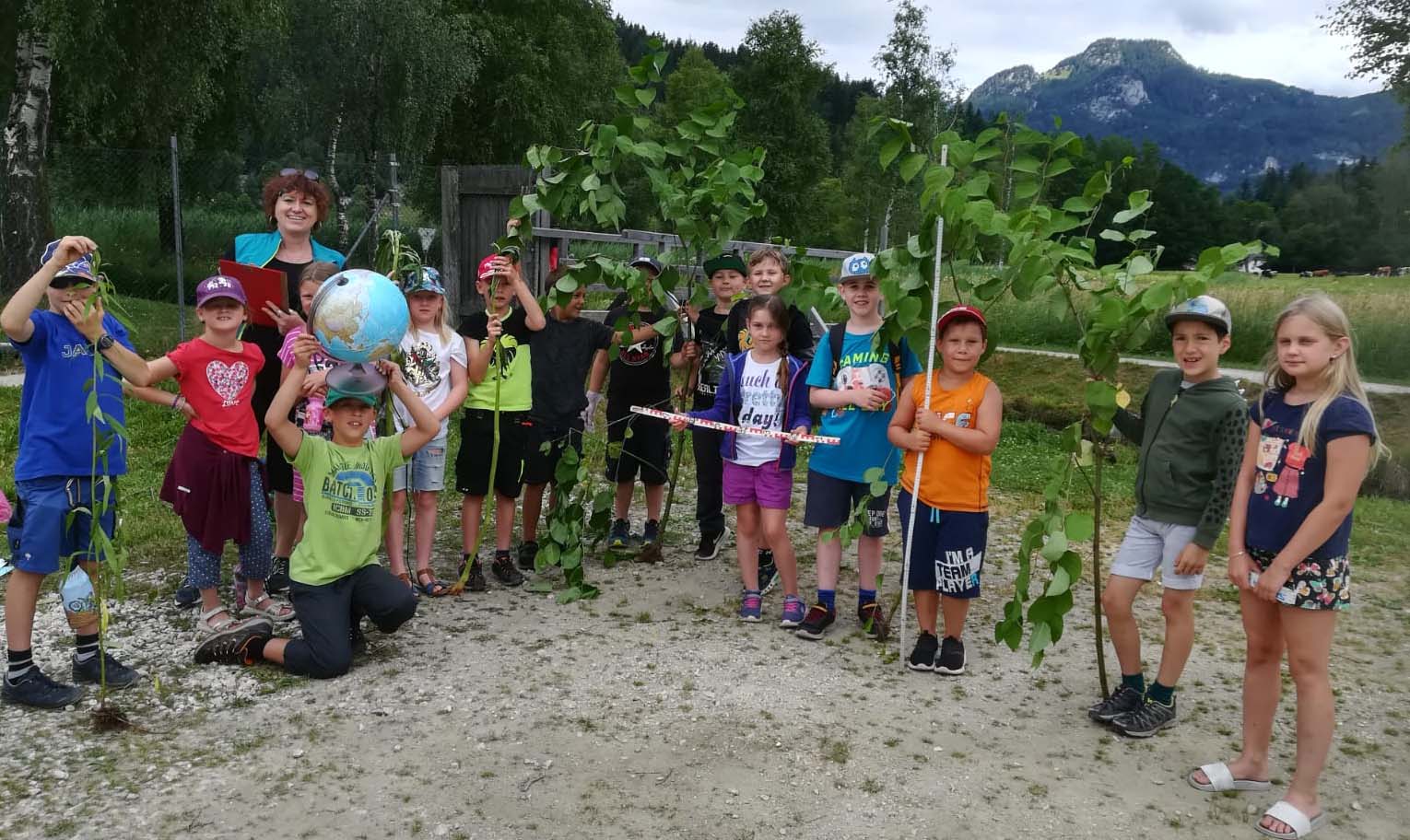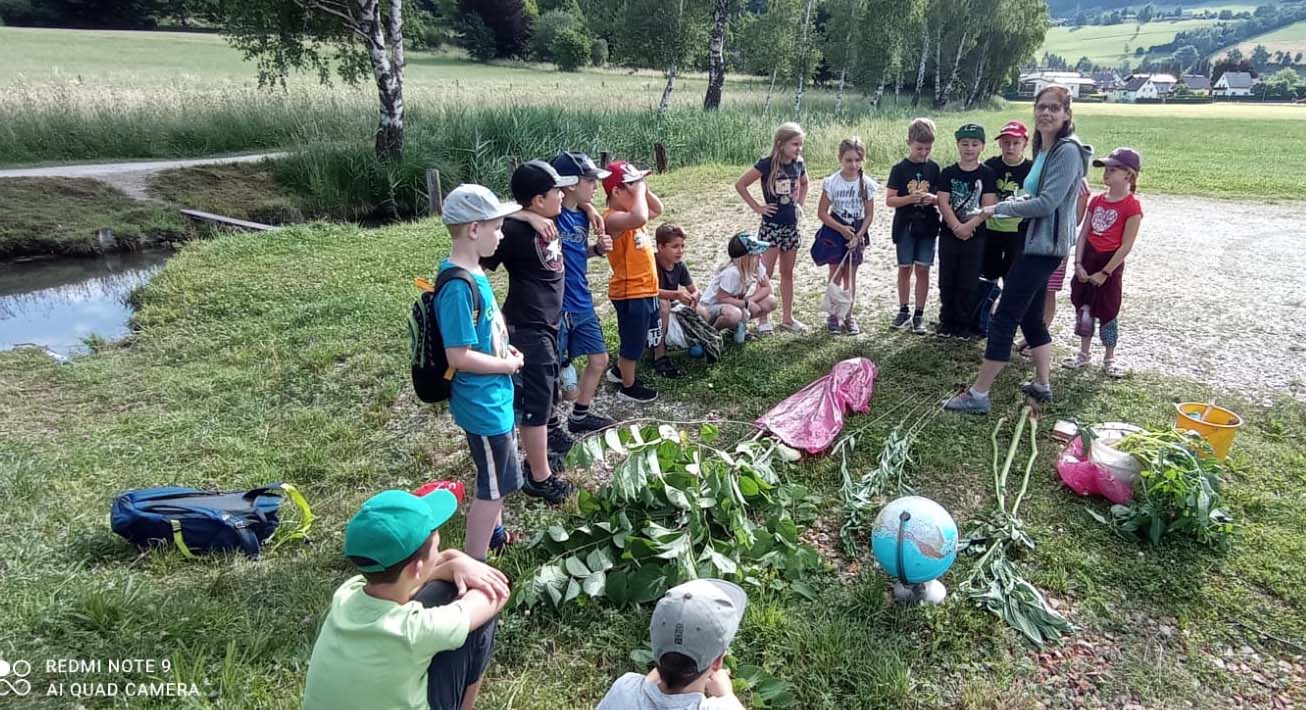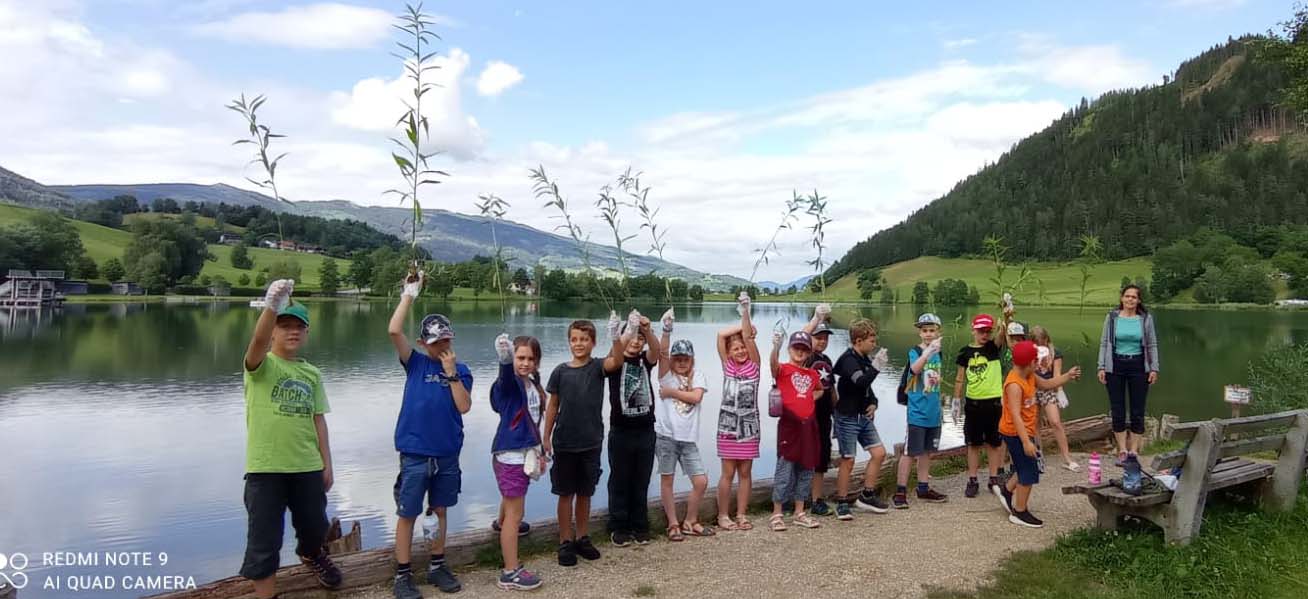At the first outdoor research day at the end of school, giant hogweed, Japanese knotweed, goldenrod and balsam aroused great interest. When searching for traces in the area around Lake Putter, some of these species were discovered. The precise analysis of these plants, their methods of reproduction and their growth behavior was carried out with great interest. The students created measurement protocols regarding length and diameter and enthusiastically presented their knowledge to the group. The experiments will continue in the next school year.
Project progress
The young researchers in the 2a class at VS Aigen are already well informed about the diversity of plant species in nature and in the garden and can name interesting plants. Renate Mayer from the HBLFA Raumberg-Gumpenstein showed the students the successful strategy of invasive species using plant material. The children used the globe to search for the countries of origin of the plants and found out when and how the plants could spread so widely. Japanese knotweed, for example, creates gigantic growth. The young researchers were able to measure a total of 2.80 meters in the demo model, with a lifespan of the above-ground shoots of a maximum of three months. But the great goldenrod and the glandular balsam have also reached a considerable height since spring.
Search for clues
While searching for clues at Lake Putter, the researchers discovered a large goldenrod nest directly in the reed belt. This is also important for nature conservation, because the goldenrod spreads chemical substances that other plants drive out, the so-called allelopathy. At the edge of the forest, the class discovered the glandular balsam. Even though it hasn't bloomed yet, it is easily recognizable. The students created measurement records of the invasive plant species they discovered and compared them with their own body size. The children were very amazed at the lengthwise growth of the invasive neophytes and also at the fact that the spread of the roots of goldenrod and knotweed is so intense. The roots, in contrast to the above-ground mass, also overwinter. The spread through the many seeds per perennial and their longevity are amazing. At a final quiz, together with the class teacher, Ms. Sabine Hübner, the young researchers presented their knowledge and their enthusiasm for the topic to the group. In the next school year, the team from VS Aigen and the HBLFA Raumberg-Gumpenstein, acquisition department, will start experiments in the CSI PhänoBiota project in the school garden and carry out observations on the phenology of the plants.

Collaborations and collaboration
The regional talent project CSI Phänobiota “Research with plant newcomers from all over the world” stands for the collaboration of educational institutions of all ages with the Naturpark Steirische Eisenwurzen GmbH, the Central Institute for Meteorology and Geodynamics, the Liezen regional management, the HBLFA Raumberg-Gumpenstein and the Berg- and Naturwacht Steiermark. Children and young people observe and document the occurrence of various phenological phases (leaf emergence, beginning of flowering, full bloom and fruit and seed ripeness). The ability to use accumulated temperature to determine the time of various phenological events makes plants in our latitudes biological measuring instruments. In times of climate change, phenology is an important pillar of climate impact research. With the help of the students, site characteristics, accompanying vegetation and land use as well as natural changes are documented. The aim is to find out the most effective phenological stage for neophyte management.








